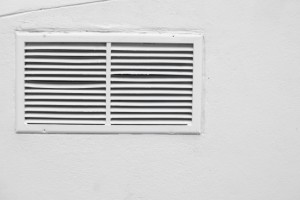
Air conditioner mold is hazardous to you and your family’s health, but you can prevent it with simple maintenance.
One of the most common causes of mold in your home is high levels of humidity. While central air conditioners are often used to reduce high levels of humidity, they can also be the culprit of helping mold to grow inside your home. If your air conditioner is not maintained properly, it can help mold to grow and spread throughout your home. Let’s take a look at how you can find out if your air conditioner has mold and how you can prevent it.
How Do Air Conditioners Get Mold?
Heating, ventilation, and air conditioning (HVAC) systems are one of the most important parts of keeping the air in your home clean. These systems work to provide healthy indoor air by removing moisture, odor, smoke, heat, dust, airborne bacteria, and carbon dioxide, and to replace it with clean air. The ventilation portion of these systems are vital to keeping your home mold free by constantly introducing new air into your home. But when homeowners do not replace filters, it could introduce dust, pollutants, and other debris into your home, giving mold a food source. Once the mold spores enter the air conditioning unit, it is exposed to alternating high and low humidity, which helps it grow and spread throughout your house.
How to Tell if Your Air Conditioner Has Mold?
If you suspect your air conditioner unit has mold, there are some things you can do to determine if you have mold or not. The first step is to check your vents and to look for visible signs of mold in them. You should also be able to smell the mold in the room if mold is present. If you notice health symptoms like allergies, headaches, stomach pains, asthma, itchy skin, and sore nasal passages only when you are at home, it could mean there is mold. You can also determine if you have mold by calling in a mold testing specialist like Environmental Consulting and Contracting Group to do an official air and surface test in your home. If the test is positive, you may need a mold remediation performed in your home. If the test comes up negative, there are some things you can do to prevent mold in your air conditioner.
Preventing Air Conditioner Mold
Air conditioner mold can be prevented by some simple maintenance and a professional service and cleaning. To prevent air conditioner mold, your home should always have an indoor humidity level between 30 and 50 percent. Try getting a humidistat installed in your home to set it at the ideal levels. Make sure you are following the manufacturer’s recommendations for cleaning and replacing your unit’s air filters. New air filters will help prevent bacteria and mold from spreading throughout your home. You should also have your HVAC system serviced every year to keep it running efficiently. When it is cool outside, don’t forget to turn off the air conditioner and allow fresh air into your home. And finally, install an air cleaner to your air conditioner unit to ensure there is constant clean air entering your home.
Mold in your air conditioner can be a big problem. But with these tips, you will give your home’s units back to normal and work to prevent mold from growing inside your air conditioner vents. For more information on preventing mold or mold testing, call Environmental Consulting and Contracting Group today!
Preventing Air Conditioner Mold with Environmental Consulting and Contracting Group!
If you or a family member suspects the presence of black mold or any other type of mold in your home, contact the professionals at Environmental Consulting and Contracting Group. With more than 30 years in the mold remediation industry, we have the experience and tools to help you. Contact us at 410-258-3579 or 1-877-591-MOLD (6653).
Be sure to follow us on Facebook, Twitter, and Pinterest!
Tags: Air Conditioner, HVAC, mold

